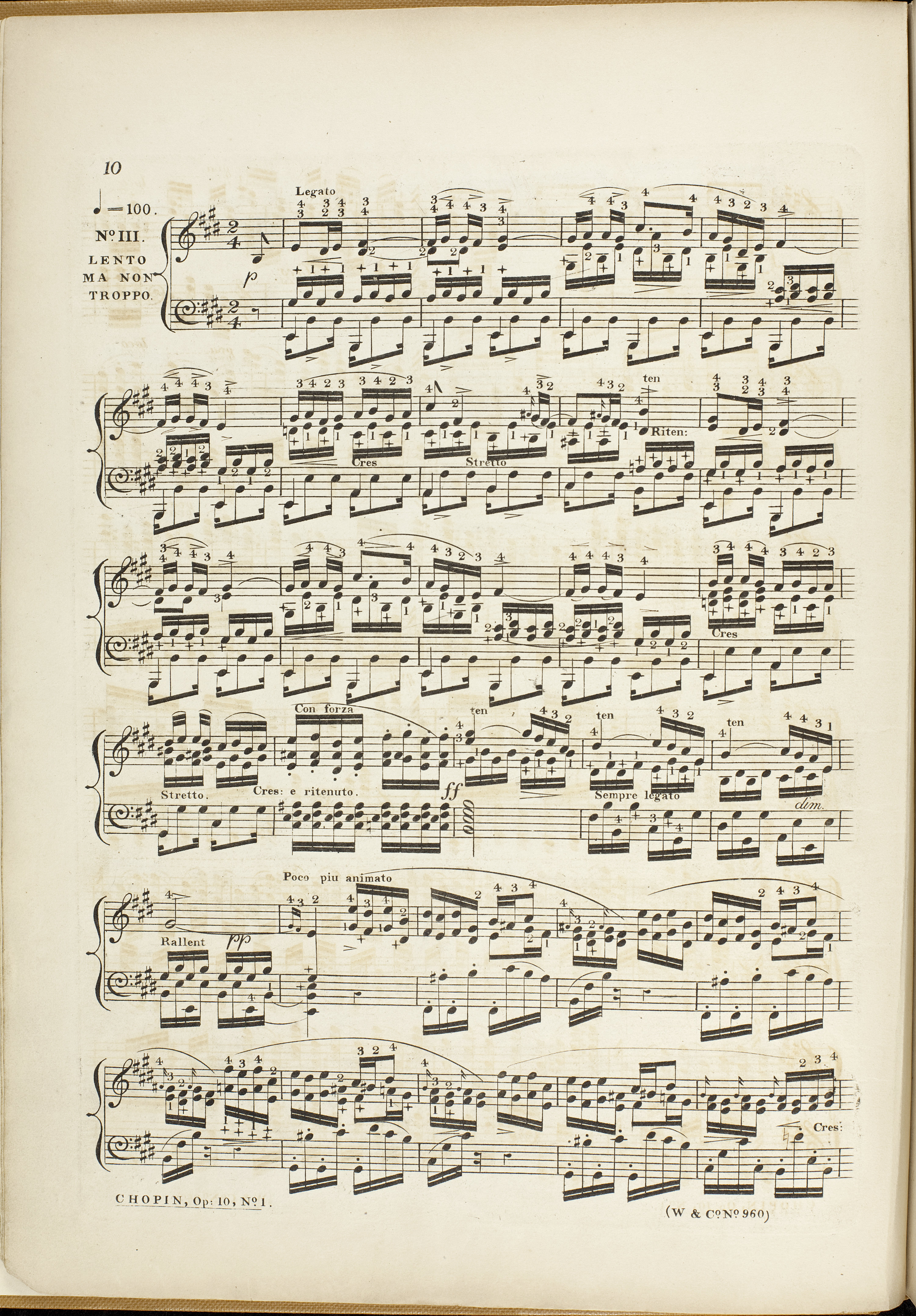



Generally, Chopin did not give the fingering in the extreme parts of the Etude – the numerals, added in FE (→GE), are to be found only in bar 8. The middle part does not contain numerous indications either – they are only in bars 38-40 (except for AI). These scarce indications were then completed in pupils' copies in a few fragments.
At the time of developing the Etude for EE, Fontana decided to finger the part of the R.H. very thoroughly – in bars 1-14 the indications are next to almost each note. In subsequent parts, the indications are less frequent, while from bar 58 they become totally absent and they reappear only in the ending (bars 75-76). It is also the alternative fingering, given a few times, that draws attention – in bars 1-2 and 9-10, as well as in bar 25. Here are all bars in which Fontana either added or modified Chopin fingering: bars 1-14, 17-27, 30-34, 36, 42, 46, 53-54, 56-57 and 75-76.
Compare the passage in the sources »
category imprint: Differences between sources
issues: EE revisions
notation: Fingering



